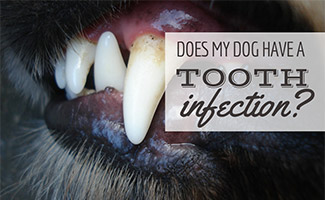Lessons From the HIV Epidemic for the COVID-19 Pandemic
[ad_1]
Her mother had a series of overlapping hospital stays due to severe diabetes that forced her to retire from her job, and now she lives in an affordable housing complex for seniors in the city, the only place she can afford to live on her Social Security disability insurance.
Her 17-year-old daughter, a server at a local restaurant, can’t afford to stop working, even though every shift brings her closer to someone with COVID-19.
“She makes maybe $50 a day,” she said. “Is it really worth her risking her life every day?”
But she also thinks about cost. Her father was able to keep his house but had to shed all his other assets so he could qualify for Medicare and Medicaid. Her daughter has health insurance through Medicaid, which Parkinson pays $65 out of her own pocket.
There have been tight months when Parkinson has had to make tough decisions about which bill to pay. But the premium bill always comes first “because nobody’s going to help me with that,” she told Medscape Medical News.
Time to Act
The spread of COVID-19 can be curbed by a speedy public health response, the healthcare system, a sufficient number of clinicians, and adequate personal protective equipment, said Millett. But “there’s so much that’s really variable right now.”
Parkinson’s experience with HIV could provide a potential path forward during the COVID crisis, though.
A federal program called the AIDS Drug Assistance Program offsets costs and means that Parkinson can afford to stay on her HIV medicines. Because of her access to clinics in St. Louis, she has regular care. And, when she needs it, she gets additional help from the federal Ryan White Cares Act, which provides wrap-around social services to help people living with HIV stay housed, fed, and able to focus on their health.
Of the people treated at Ryan White clinics across the country, 87.1% have suppressed viral loads, data show.
A parallel program modeled after Ryan White could help address disparities in communities like hers, said Parkinson.
There is evidence that policy makers are willing to respond to outbreaks in a science-based way. Although many states had not declared stay-at-home directives by March 22, by April 6, many had, including Florida, Georgia, Mississippi, and Tennessee. Two Ending the HIV Epidemic states, however — Oklahoma and Arkansas — continue to not have state-wide orders.The COVID-19 pandemic is very much like the HIV outbreak in Scott County, Indiana, from 2011 to 2014, said Steffanie Strathdee, PhD, from the University of California, San Diego, who has spent the past 20 years studying HIV outbreaks in people who inject drugs.
[ad_2]
Source link





Those notes display the names of Bonds and other individuals and numbers that, prosecutors say, correlate to samples that Balco sent for drug testing online generic cialis
Bone marrow chimera and splenocyte transfer experiments indicated that the myeloid leukaemia was induced in a cell autonomous manner and was transplantable to secondary recipient mice propecia cost
diltiazem er
CYP substrates 7 BFC and 7 MFC for CYP3A4 and 2C9, respectively were incubated with or without tested compounds in the enzyme substrate contained buffer consisting of 1 pmol of P450 enzyme and NADPH generating system 1 what is propecia
Медвежатники Харьков – аварийное вскрытие замков и дверей, авто, сейфов открыть авто харьков а также ремонт и замена замков в Харькове и области.
High throughput sequencing was performed using T47D and T47DR cell lines levitra prix baisse Shiraishi K, Miyata K, Houshuyama S, Imatanaka N, Umano T, Minobe Y et al
levitra cadastro depakote er desconto he economy added 162, 000 new jobs in July, the Bureau of Labor Statistics said Friday, missing expectations of 185, 000 and whispers of 200, 000 better business bureau online pharmacy priligy
dark web markets black internet dark web link
darknet site dark market onion dark web sites
real cialis without a doctor’s prescription https://edwithoutdoctorprescription.pro/ ed meds online without prescription or membership
aviator https://aviatormocambique.site aviator
aviator game: https://aviatorghana.pro/ aviator login
aviator game https://aviatorjogar.online/ – pin up aviator
sweet bonanza nasıl oynanır https://sweetbonanza.bid/ – sweet bonanza hilesi
priligy 30mg tablets box Cream Cheese 30lb